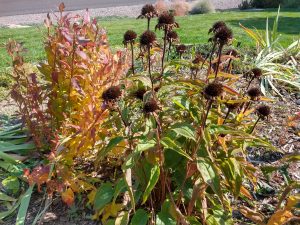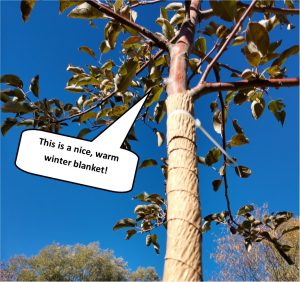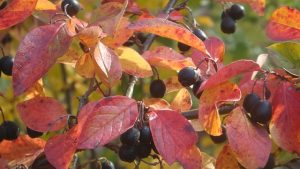
Whether we like it or not, the seasons are changing again and cold winter nights will soon be here. Some gardeners prefer to clean up their garden in the fall, and others let things go a little until spring. For the most part, the plants don’t care one way or the other. However, there are a few tasks that you should not delay, and a few others that are easy to procrastinate.
FALL NECESSITIES:
- Bring in any plants that you intend to keep as houseplants or which you hope to over-winter for next year. Be sure to carefully inspect for insects before you bring them into your home.
- Empty (or partially empty) and protect your pottery for the winter. Terra cotta planters will disintegrate if left in a snow bank. Glazed pottery needs room for any water to expand; these should be at least partially emptied of soil.
- Remove diseased or infected plant material. Throw away the foliage from plants covered in powdery mildew; roses infected with black spot; and any plants with bad insect infestations. Don’t compost this material unless you are SURE your compost pile gets hot enough to destroy the pathogens.
- Add mulch, if necessary. One of the benefits of mulch is an insulation layer for soil and roots. Get a nice, thick layer of mulch on before the soil freezes to keep it warm longer. You don’t need to remove old mulch; you can simply add another layer on top of the old mulch.
 Use tree wrap on young trees to prevent sunscald. Young trees have thin bark which can crack in extreme temperature fluctuations, creating an unsightly wound that inhibits the tree’s growth and takes years to heal.
Use tree wrap on young trees to prevent sunscald. Young trees have thin bark which can crack in extreme temperature fluctuations, creating an unsightly wound that inhibits the tree’s growth and takes years to heal.- Cover your vegetable garden with leaves, mulch or straw. If you don’t have time to clean up all the debris, just be sure to cover the soil for the winter. Bare soil can become compacted which is nightmarish in the spring.
FALL PROCRASTINATORS:
- You don’t have to clear up all the perennial and annual flower beds. Sure, it doesn’t look great to have gray, decaying plant material in the yard, but that debris also works as an extra layer of winter mulch for the plants and soil. Additionally, the remnants of your flowers can become wildlife habitat for birds and insects.
- You don’t have to rake up all the fallen leaves. Yes, we do want to remove huge piles of leaves that could suffocate the plants and soil beneath them but it’s not necessary to remove every single leaf. Running the lawn mower over the leaves to break them up is a great idea, and much easier than raking them up, too.
 Pruning shrubs and trees should really wait until late winter/early spring. While it’s unlikely you’ll really damage your shrubs or trees, you don’t want to stimulate new growth during these nice, warm sunny fall days. Many shrubs (like this Cotoneaster) produce small berries which feed the birds late in the winter.
Pruning shrubs and trees should really wait until late winter/early spring. While it’s unlikely you’ll really damage your shrubs or trees, you don’t want to stimulate new growth during these nice, warm sunny fall days. Many shrubs (like this Cotoneaster) produce small berries which feed the birds late in the winter.
In my yard, I do as much fall clean-up as I have the time and energy to do and I save some for the spring. I enjoy spring cleaning more than fall clean-up because it’s so fun to find little plants poking up through the soil.


